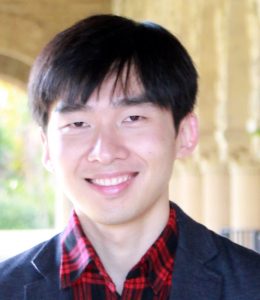1. Light-matter Interaction in 2D Materials
Since the discovery of graphene, many new two-dimensional materials have been found to exhibit exotic physical properties. A particularly interesting class in optics is the transition metal dichalcogenide (TMDC), such as MoS2, which is a layered semiconductor with the bandgap energy in the visible frequency range. The surprise came as when the TMDC thickness is reduced to the monolayer level, a direct band gap starts to emerge at high symmetry points near the Brillion zone edge, yielding orders of magnitude higher quantum efficiency compared with the bulk counterpart. Moreover, since the few-layer TMDC is only a few atoms thick, the Coulomb interaction between charges is no longer confined in the crystal and the dielectric screening is largely reduced, as predicted by Keldysh and Rytova more than fifty years ago. The reduced Coulomb interaction results in a very strong binding effect between the optically excited electron and hole, forming a so-called exciton. We observe the TMDC exciton has a non-hydrogenic Rydberg series and a very large oscillator strength stable up to the room temperature, which significantly amplifies the light-matter interaction in the nanoscale. Other many-body physics such as the trion, biexciton, and excitonic Boson-Einstein Condensation (BEC) are also under investigation. The strong light-matter interaction associated with the excitonic effect also enhances the nonlinear optical effect and even enables the preparation of the single photon quantum emitter in a scalable manner.
2. Controlling the Valley Degree of Freedom
In the 2D TMDC, a new degree of freedom emerges, which is named after the valley-like dispersion relationship in the momentum space. The fundamental bandgap of a monolayer TMDC is located at the K and K’ valleys, with a fixed angular momentum difference between the conduction and valence bands. The angular momentum difference is induced by the Berry curvature related winding phase of the Bloch wavefunction as well as the d-orbital electron’s angular momentum in the transition metal element, and has a sign depending on the valley index. To conserve the angular momentum, the optical transition has to follow a set of selection rules, through which one can selectively position the exciton in a preferred valley or the superposition state between valleys, enabling the valley degree of freedom to become a potential quantum information carrier. We have recently demonstrated the all-optical manipulation of the valley polarization with ultrafast laser pulses. Currently, we are interested in developing full control over the valley degree of freedom. Moreover, TMDCs have a significant spin-orbital coupling among 2D materials, which leads to spin splitting about 100s meV and a spin-valley locked relationship between the bands near the band edge. Such locked relationship implies the valley degree of freedom can provide a useful handle for controlling the spin polarization.
3. Scanning Nearfield Optical Microscopy
The spatial resolution of an optical system is normally restrained by the diffraction limit, a fundamental limit that can be related to the Heisenberg uncertainty principle. In other words, the free space can be considered a low-pass filter that blocks the light with high spatial frequency, known as the evanescent wave which carries high-resolution information. In the low-dimensional quantum material, many interesting physical phenomena happen on a length scale smaller than the diffraction limit. To optically probe these phenomena, one approach is to obtain the evanescent wave in the near field by integrating a scanning probe, such as an AFM tip, into the optical microscope, which forms a Scanning Nearfield Optical Microscope, or SNOM. We are experienced in developing new types of SNOM with a spatial resolution of a few nanometers and have applied them to study various nanophotonic effects. In the future, we plan to improve the performances of the SNOM technique, including the spatial-temporal resolution, sensitivity, and spectral bandwidth, in order to provide further quantitative knowledge about the emergent phenomena in the low-dimensional quantum material.
4. Nanophotonic Device Physics
Light is becoming a new media for on-chip communication in response to the rapidly growing demand for high bandwidth and energy efficiency in information exchange, especially within data centers. The connection between electronics and photonics is established through nanophotonic platforms including silicon photonics and plasmonics. We are currently interested in integrating 2D materials into modern nanophotonic devices as active elements for novel functionalities. Thanks to the extreme thickness of the 2D material, we can efficiently control the device performance at a very fast speed. In addition, the nanophotonic device provides a large enhancement in the optical field and Purcell factor, which allows us to study the strong field/strong coupling physics and their related topological phenomena in 2D materials. Since the 2D material is only a surface layer with no bulk attached, we can probe the pure response induced by the strong near field. The nanophotonic platform is promising to bridge the gap between fundamental science and real-world applications.


